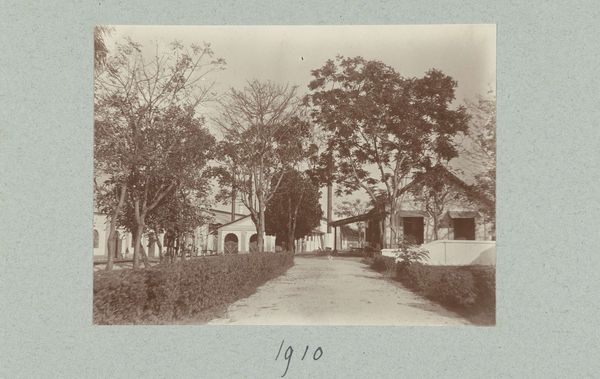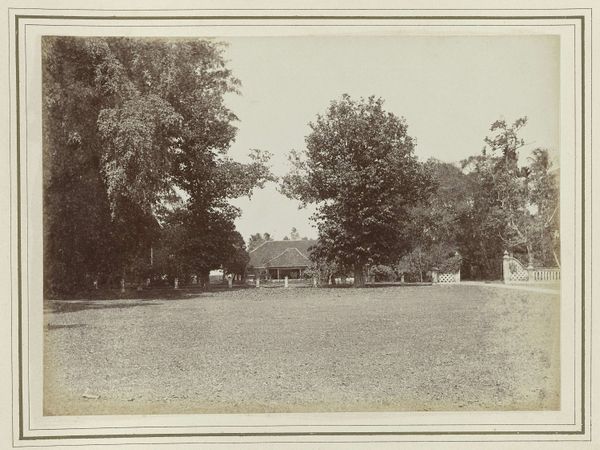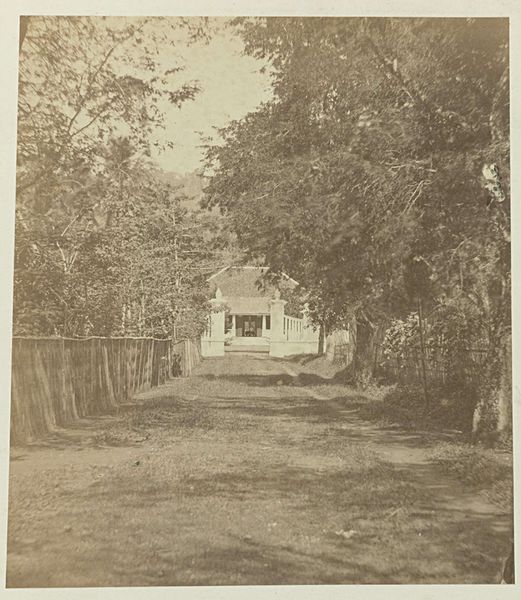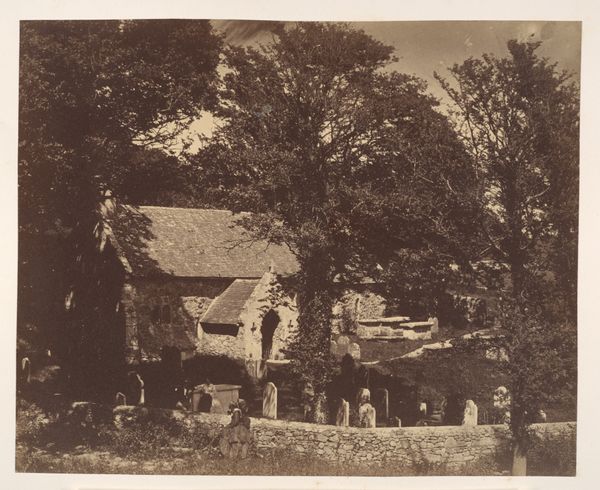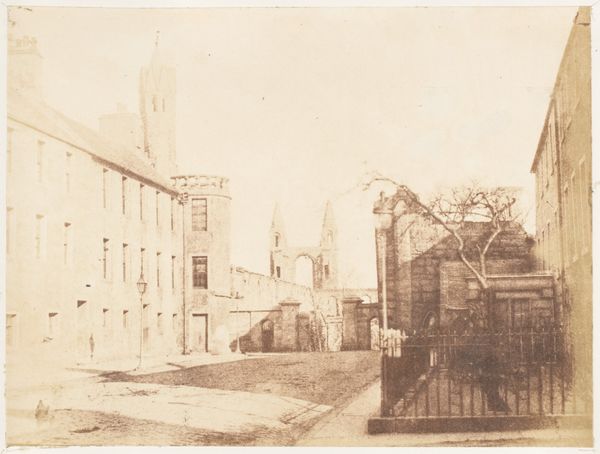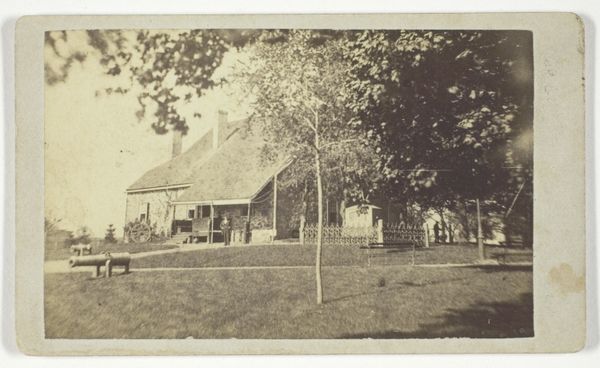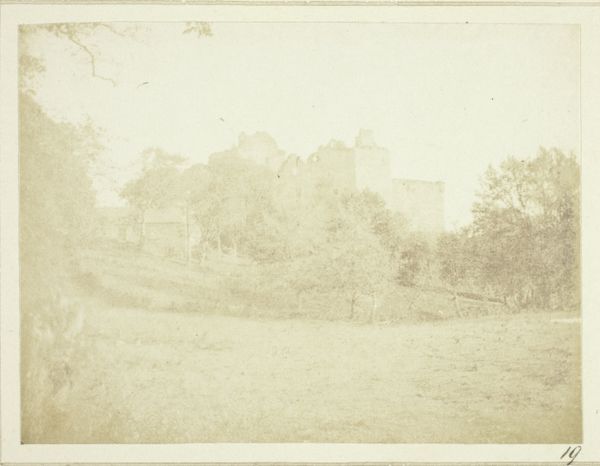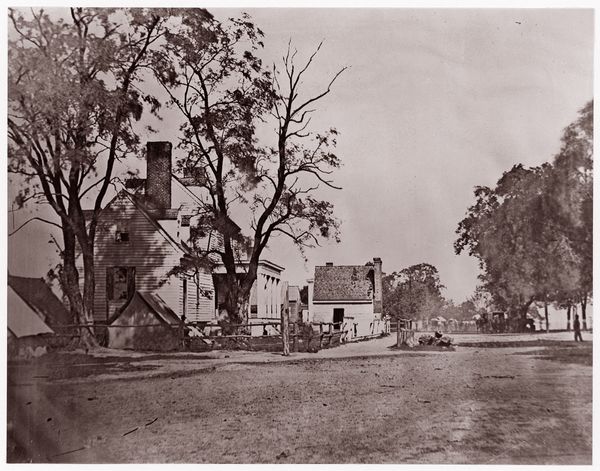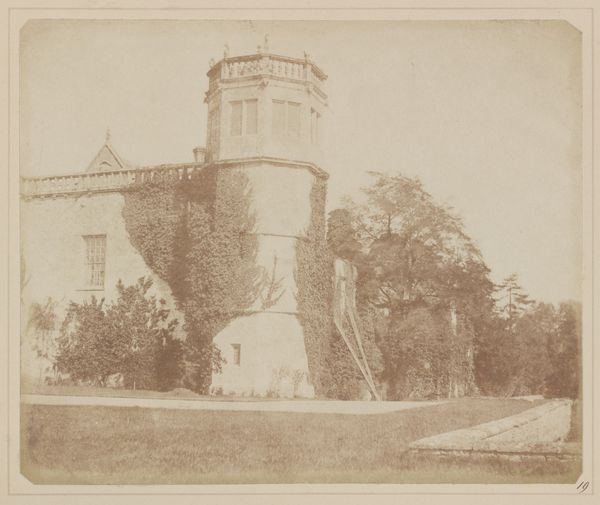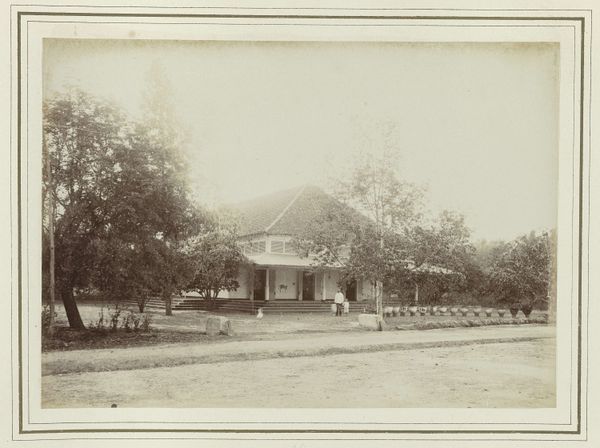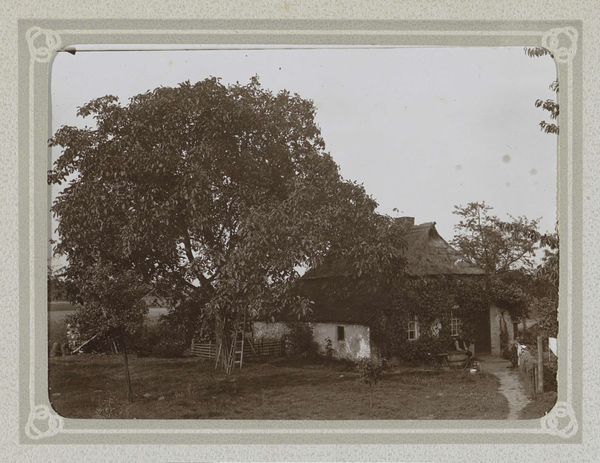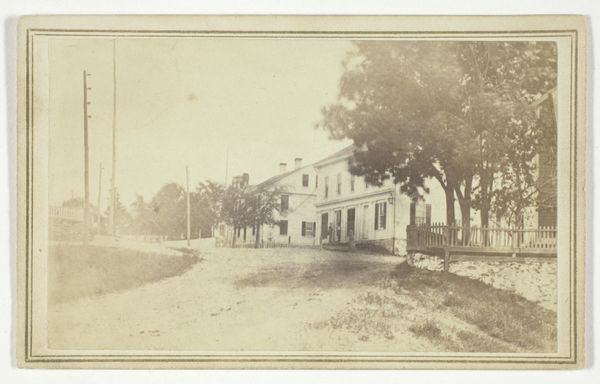
plein-air, daguerreotype, photography, albumen-print
#
tree
#
plein-air
#
landscape
#
daguerreotype
#
photography
#
albumen-print
#
building
Copyright: Public Domain
Hill and Adamson made this photograph of St. Andrews Madras College between 1843 and 1848, using a process called calotype. This early photographic technique involved coating paper with silver iodide, exposing it in a camera, and then developing the latent image. The final print, as you can see, is a warm, sepia tone. The texture is soft, almost hazy, a quality inherent to the paper and chemicals used. Notice the way the light seems to diffuse across the scene, subtly rendering the stone walls and foliage. The calotype process, though revolutionary, was labor-intensive. Each print required careful preparation and handling, making photography a craft as much as a science. Hill and Adamson, as pioneers of this technology, blurred the lines between artistic expression and technical skill, creating images that reflect both the beauty of their subjects and the hands-on process through which they were made. This reminds us that every photograph, even in its earliest form, is a result of human intervention and ingenuity.
Comments
No comments
Be the first to comment and join the conversation on the ultimate creative platform.
